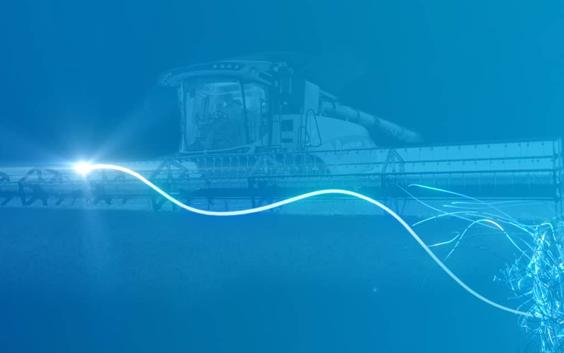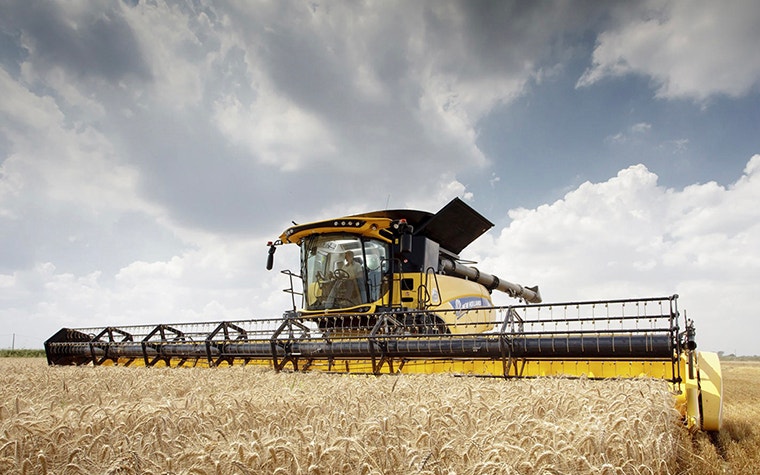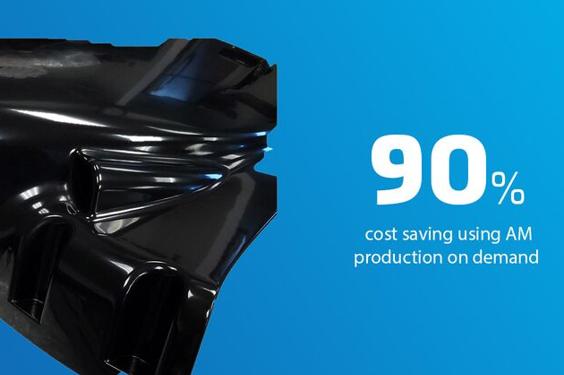EXPERT INSIGHT
What Could Possibly Go Wrong? How AM Can Reduce Risk in Your Manufacturing Set-Up

Production lines are complex systems. Keeping them running perfectly is an art. Hundreds of supply chains converge to make up a line: from the big pieces of machinery with their wear and spare parts, right through to all the little tools, brackets, clips, jigs, and grippers that join them up. Every single part has the potential to stop your line. Here, we look at how you can use additive manufacturing (AM) to remove risk — in all its guises — from your manufacturing process.
CNH Industrial is one of the world's biggest capital goods manufacturers, making agricultural and construction equipment, commercial vehicles, and more. They started their AM journey ten years ago with prototyping, but it has since become so much more than that. Today, they are masters in risk avoidance through AM.
When COVID-19 snipped supply chains
Manufacturers face a variety of risks, from major ones like changing trends or legislation to seemingly minor ones like employee sick days and unscheduled equipment downtime. All of these can impact a business, but almost two years ago, one of the biggest risks to manufacturers' production came from an unexpected place.
The COVID-19 pandemic highlighted how vulnerable manufacturing businesses were. With transport around the world shutting down, supply chains were hit hard. Many manufacturers struggled to get hold of raw materials and components.


CNH Industrial could have been among this group. A small but vital component couldn't be shipped from China, which risked delays in fulfilling orders or expensive workarounds.
Mitigating reputational risk
More than this, it risked affecting the company's relationship with customers, which could have financial and reputational consequences further down the line. Run an incomplete production — stopping before the missing production line part was needed — and resume later? An expensive and risky option given there was no set guarantee of final part delivery. Stop assembly and wait? Not ideal for any manufacturer, especially given the associated cost in doing so.


The safest route forward for risk mitigation was 3D printing. While the resulting cost was €15 per part rather than the usual €2, it had a lead time of just a week, allowing production to continue as normal. The total cost of additive manufacturing in this situation was €806 but compared to a potential loss of €189,000, and with the shorter lead times, this was preferable.
Staying safe: risks to health and safety
CNH Industrial has been developing its AM strategy for many years, and around 50% of its facilities now use AM to support manufacturing operations. As well as printing production tools like fixtures and maintenance aids, the company went further and used AM to enable social distancing and create a safer working environment during the pandemic.
It worked with the Materialise Mindware team to print hands-free door opening devices and components to make it possible for previously multi-person tasks to be carried out by a single person. They also saw an opportunity to help the community by printing PPE for local hospitals and schools.
While CNH Industrial was already using additive manufacturing in many different ways, the pandemic really shone a light on the technology's potential to mitigate risk. Not just risks lurking within supply chains but also the risk to health, reputation, and customer relationships.


Why preparing for plan B is an ideal plan A
It would be easy to think that, as we emerge from the pandemic, we can go back to normal and assume that suppliers will too. But supply chain disruption has been a frequent, unwelcome visitor recently.
In the past year alone, trade has been affected by the Suez Canal blockage, staff shortages in freight transport, and the highly complex reasons that led to local CO2 shortages.
The one thing that is consistent is that supply chains can't be guaranteed. Businesses need to take steps to mitigate these risks. To prepare for plan B scenarios. And that is where AM can come in. It can protect businesses against future shocks by reducing the reliance on external suppliers and minimizing downtime. It gives businesses control back but also gives them more autonomy when it comes to cost and stock control.
Of course, it's not just supply chains that carry risks that AM can address. Our teams have made easy-to-lift production line tools that prevent health and safety risks, jigs that minimize human error, and critical brackets that fail less frequently, reducing the constant risk of downtime that had been haunting the line.
AM can drive innovation in big, impressive ways, but it can also be your safety net, protecting your production and your business. Quite often, the manufacturing businesses that look to AM to mitigate risk end up innovating, improving, and saving money at the same time.
Share on:
You might also like
Never miss a story like this. Get curated content delivered straight to your inbox.
